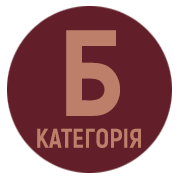MOTIF OF HISTORICAL GLORY IN T. SHEVCHENKO’S POETRY
DOI:
https://doi.org/10.24919/2522-4565.2021.45.11Keywords:
T. Shevchenko, poetry, Cossack glory, grave, Hetmanate, domination (panuvannia), HaydamachchynaAbstract
The article examines the motif of historical glory in the poetry of Taras Shevchenko, which was one of the dominant motifs for his early period of creativity. According to T. Shevchenko, Ukrainian glory is manifested in the Cossack period of Ukrainian history, and its creator is the Cossacks. Historians usually recognize the period of Khmelnytsky as the most glorious one in terms of its achievements. The poet, in his turn, avoids mentioning the name of B. Khmelnytsky in this context, associating the person of the hetman with the infamous Pereyaslav agreement of 1654. Instead, during developing the motif of Cossack glory, the poet brings out the figures of Taras Tryasylo («Tarasova Night», 1838), Ivan Pidkova («Ivan Pidkova», 1839), Cossack leaders of the period of time before Khmelnytsky, as well as creates the image of Gamalia («Gamalia», 1842). T. Shevchenko calls Koliivshchyna a period of Cossack glory («Haidamaky», 1839–1841). Therefore, we investigate the criteria that allowed T. Shevchenko to glorify and equate Haydamachchyna to the period of Cossack glory. On the premise of the poetry we find out the bases of Cossack glory. The Cossacks are portrayed as a saving military force for Ukraine and its people, capable of repelling enemies; as a force aimed at protecting the native Orthodox faith; as well as a force that constitutes the moral support of the nation. The concept of Cossack freedom appears to be related to the concept of Cossack glory. We note the connection between the concepts of Cossack glory, Hetmanate and domination (panuvanniya). We pay attention to the differences in the discourse on the grave as a symbol of Cossack glory in different periods of the poet’s works. In the further periods of Taras Shevchenko’s works, the theme of the Cossacks is usually not associated by the author with the motif of glory, but is revealed in other perspectives. If in the early period of his works we are talking about repelling the enemy in the past, then in the period of «three years» T. Shevchenko comprehends the Cossacks’ past in connection with various manifestations of the all-Ukrainian destruction of that time, caused by the enslavement of Ukraine by the Russian empire. Most notably the motif of historical glory in the period of «three years» is portrayed in the message «To both dead and alive …» (1845) through the poet’s call to comprehend the events of the past and get rid of the lie. The poet speaks of the continuity of the past glory: from grandfathers, glorious knights – to grandchildren, their descendants. The author emphasizes that it is possible to become the heir of grandfather’s glory only through knowledge of the past.
References
Барабаш Ю. Історіософський вимір. Тарас Шевченко: імператив України. Історіо- й націософська парадигма. Київ : Києво-Могилянська академія, 2004. С. 48–80.
Дзюба І. Слава. Барабаш Ю., Боронь О., Дзюба І. (та ін.). Теми і мотиви поезії Тараса Шевченка. Київ : Наукова думка, 2008. С. 86–97.
Маланюк Є. До справжнього Шевченка. Книга спостережень: cтатті про літературу. Київ : Дніпро, 1997. С. 138–150.
Смолій В., Степанков В. Українська державна ідея ХVІІ–ХVІІІ століть : проблеми формування, еволюції, реалізації. Київ : Альтернативи, 1997. 367 с. URL: http://history.org.ua/LiberUA/SmStUkrDerzh_1997/SmStUkrDerzh_1997.pdf (дата звернення: 22.04.2021).
Стебельський Б. Концепція слави у творчості Шевченка. Ідеї і творчість. Торонто : Канадське наукове товариство, 1991. Т. 32. С. 183–194. URL: https://diasporiana.org.ua/wp-content/uploads/books/7110/file.pdf (дата звернення: 15.03.2021).
Шевченко Т. Повне зібрання творів : у 6 т. Т. 1. Поезія 1837–1847 / редкол. М.Г. Жулинський (голова) та ін. Київ : Наукова думка, 2003. 784 с.
Шевченко Т. Повне зібрання творів : у 6 т. Т. 2. Поезія 1847–1861 / редкол. М.Г. Жулинський (голова) та ін. Київ : Наукова думка, 2003. 784 с.



